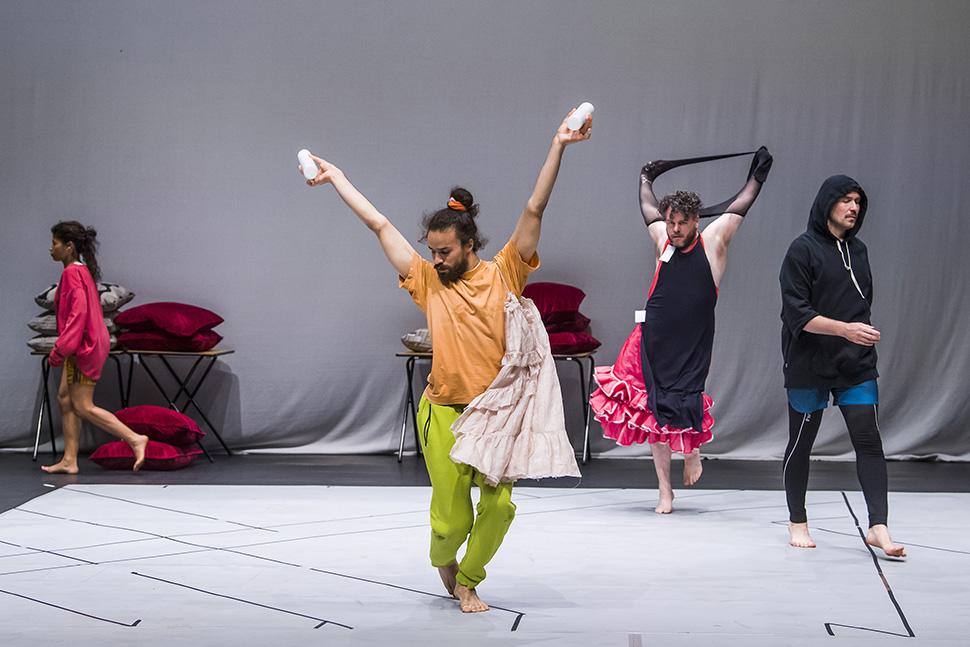| Year / Length: | 2019, 60' (Italian premiere) |
|---|---|
| Direction, choreography, costume design, sound design, sound design: | Trajal Harrell |
| Set design: | Erik Flatmo, Trajal Harrell |
| Lighting design: | Stéfane Perraud |
| Director’s assistant: | Lennart Boyd Schürmann |
| Dramaturgy: | Katinka Deecke |
| Cast: | Trajal Harrell, Stephanie Amurao/Maria Ferreira Silva, Helan Boyd Auerbach, Vânia Doutel Vaz, Rob Fordeyn/Challenge Gambodete, Christopher Matthew, Nasheeka Nedsreal, Perle Palombe, Songhay Toldon, Ondrej Vidlar, Tiran Normanson |
| Production: | Manchester International Festival |
| Forms one part of a trilogy, Porca miseria, commissioned by: | Manchester International Festival, Schauspielhaus Zürich, ONASSIS STEGI, Kampnagel (Hamburg), Holland Festival, the Barbican and Dance Umbrella, NYU Skirball, Berliner Festspiele e The Arts Centre a NYU Abu Dhabi |
| Is toured by: | Causecélèbre, the European touring company of Trajal Harrell who is currently an artist in residence at Schauspielhaus Zürich |
| Causecélèbre: | Is based in Belgium and is administrated by Lena Appel in collaboration with Lies Martens |
| Note: | The performance will be followed by a conversation with the choreographer |
Trajal Harrell - Maggie the Cat

Description
Cat. Catwalk. Runway. This combination has been brewing in Harrell’s research portfolio for twenty odd years, as the eventual evolution of his past work and research on the history of runway movement and its development from the theatrical spectacles in the court of Louis XIV to its use in the voguing dance tradition and competitions. Harrell’s work exemplifies runway movement as dance language in and of itself, and furthermore as a tool for character personification. In the case of Maggie the Cat, Maggie is both figurative and abstract. Maggie is both a character and at times an unstoppable drive and energy propelling the rhythm and structure of the work. The dance is populated by the Mississippi milieu of the play: Big Mama, Big Daddy, and the African American servants on Big Daddy’s plantation. These characters are personified but are also competing cadences in tone, sound, and force driving the dance, the musicality, and the visual composition of the work.